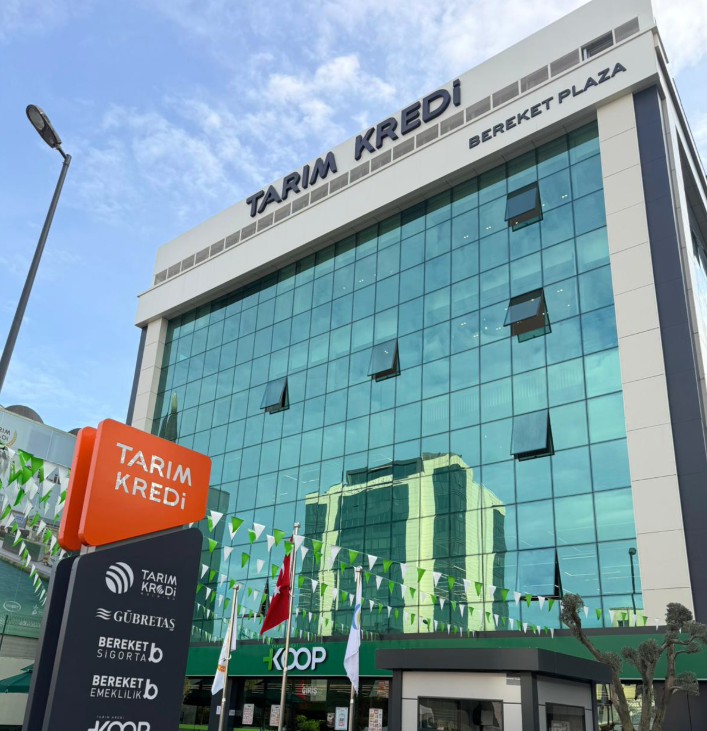

EPISODE 1
1. Name of the Operator and Full Address of the Establishment
GÜBRETAŞ YARIMCA PLANT
ATALAR MAH. HAYAT SK. NO:30 41740 KÖRFEZ/KOCAELİ
2.Security Report Preparation
As GÜBRE FABRİKALARI TÜRK ANONİM ŞİRKETİ, in accordance with the "Regulation on the Prevention of Major Industrial Accidents and Reducing Their Effects", the hazardous substances in our organization have been declared using the notification system of the Ministry of Environment, Urbanization and Climate Change, and since it is a high-level organization, it is liable in accordance with Article 11 of the same regulation. Security Report has been prepared.
3. Activities Performed in the Establishment
On November 6, 1952, the then Council of Ministers decided to establish the Fertilizer Factories Turkish Joint Stock Company (GÜBRETAŞ), but the company officially started operating in 1953. Based on the idea that Turkish farmers could obtain high-yield and quality products by using chemical fertilizers, Yarımca facilities were established in 1961 and continued on its way by rapidly increasing fertilizer production.
It carries out the production of Ammonia, Phosphoric Acid and Sulfuric Acid storage with the chemicals it uses as its basis.
4. Substances That May Cause Major Accidents
In our organization, substances that may cause a major accident specified in Annex-1 Section 1 and 2 of the Regulation on the Prevention of Major Industrial Accidents and Reducing Their Effects; Ammonia and Zinc Oxide. Ammonia is a toxic chemical and is lethal if inhaled. It also causes skin and eye irritation.
Zinc oxide is a chemical toxic to the aquatic environment.
5.What to Do in Case of a Major Accident
In case of a major accident, internal emergency plans are put into practice to manage the accident in the most effective way and minimize the effects. Relevant external units are notified. Service groups determined within the plan carry out first interventions and other interventions in an organized manner.
CHAPTER 2
1. Summary information about major accidents that may occur in the organization and the measures to control them
Emissions from the tank, pump and pipeline are simulated. Overflow pools, gas detectors, systems measuring internal pressure in lines, etc. Continuous controls are provided with the relevant automation systems, and the maintenance and controls of the systems and warning systems that will intervene in emergency situations are monitored and carried out. Ammonia can be lethal if inhaled and has the potential to cause serious eye and skin irritation.
2. Efforts to Cope with Major Industrial Accidents and Minimize Their Effects
Technical measures taken (safety certified process control equipment, explosion-proof equipment, emergency stop systems, pressure relief systems, gas detection systems, fire detection and extinguishing systems, etc.) and organizational measures (establishing teams related to process safety, contacting employees related to the safety management system). By constantly exchanging opinions, following technological developments related to security, cooperating with emergency service units, etc.), the probability of all major accidents predicted has been reduced to an acceptable level.
The organization has created and implemented an Internal Emergency Plan to deal with major industrial accidents and combat situations that may cause major industrial accidents. Various service groups have been created within the scope of the prepared Internal Emergency Plan; It has determined how to ensure coordination with relevant parties for cooperation with emergency service units (Health services, Fire Brigade, AFAD, etc.) and adequate arrangements have been made for intervention in the organization.
3. Emergency Service Units Collaborated for Response to Major Industrial Accidents
Within the scope of the prepared Internal Emergency Plan, it has been determined how to ensure coordination with relevant parties for cooperation with emergency service units (Ambulance, Fire Brigade, AFAD) and adequate arrangements have been made for intervention in the organization.
CHAPTER 3
Information to be used in emergency situations for chemicals within the scope of BEKRA:
1.AMMONIA
IDENTIFICATION OF HAZARDS
Ammonia is corrosive to human tissue and is a poisonous and flammable gas. It is flammable at low temperatures. It is a colorless gas with an unpleasant odor and has a destructive effect on the soft membranes of the eyes, throat and lungs. High purity may cause laryngeal and bronchial spasm and edema, making breathing difficult. Depending on the intensity of breathing, it causes a burning sensation, shortness of breath, headache, collapse and death. Liquid Ammonia causes serious burns if it comes into contact with skin.
FIRST AID MEASURES
Inhalation
Immediate medical attention is mandatory in all cases of overexposure. Rescue personnel must have a breathing apparatus. Affected persons who are conscious should be helped to an area not contaminated by gas and allowed to breathe fresh air. If there is a breathing problem, oxygen should be given. It is very important to move away from the gas-contaminated area quickly, and if breathing stops, artificial respiration and supplemental oxygen should be applied. The patient should be kept warm and calm.
Skin Contact:
In case of skin contact or frostbite; Contaminated clothing should be removed and affected areas should be washed with warm water for at least 15 minutes. Hot water should not be used. The burned area should not be rubbed or massaged. If there is extensive tissue frostbite, frostbite or blistering of the skin surface, the patient should be taken to a healthcare facility immediately.
Eye Contact:
In case of contact with eyes, the eyelids should be opened as much as possible to accelerate the evaporation of the liquid product. The eye area should be washed with warm water for at least 15 minutes. If the patient cannot look at the light, the eyes should be closed with a light tape and taken to a healthcare institution immediately.
FIRE FIGHTING METHODS
Suitable Extinguishing Media / Extinguishing Method:
Ammonia has the property of flammability at low temperatures. Low concentrations of gas in air ignite. Gas release in a closed environment poses an explosion hazard.
Officers who will respond to the emergency must wear a high-pressure breathing apparatus and wear protective clothing and boots made of butyl rubber. Because ammonia dissolves in water, water is the best extinguisher. While the water extinguishes the fire, it also absorbs the ammonia gas emitted. In case of a fire, the ammonia storage tank should be cooled by keeping water on it. Since flowing water is corrosive, it should be prevented from entering water drains and wastewater pipes. Areas exposed to fire should continue to be cooled for a while after the flames are extinguished.
Unsuitable Extinguishing Media/Method:
The combination of water and ammonia creates a strong base, it is necessary to pay attention to environmental compatibility.
Harmful Substances That May Be Emerged as a Result of Combustion:
No.
Protective Equipment in Fire Fighting:
Firefighting crew must wear respiratory protection equipment and flame resistant clothing.
MEASURES TO BE TAKEN AGAINST ACCIDENTAL GAS RELEASE
Personal Precautions:
The area where the product has spread should be evacuated immediately. Appropriate protective equipment should be used when entering the area where the product is spread. There must be no smoking and no flames, fire or sparks in the danger area. Appropriate ventilation must be provided. Appropriate protective equipment should be used.
Cleaning Methods:
The affected area should be ventilated. If the leak is in the user's equipment, the gas pipes must be purged with inert gas (nitrogen) before starting the repair.
STABILITY AND REACTIVITY
Stability:
Decisive.
Situations to Avoid:
The combination of water and ammonia creates a strong base.
Materials to Avoid:
It reacts with acids and oxidizing materials (fluorine, chlorine, etc.). It is corrosive to copper, zinc, tin, brass and many metal surfaces. It reacts with hypochlorite or other halogen sources to form explosive compounds sensitive to pressure and temperature. It should not come into contact with silver and mercury as they will form an explosive mixture.
TOXICOLOGY INFORMATION
Ammonia is a poisonous, mutagenic, irritating gas. It may cause damage to the respiratory system and serious burns to the skin and eyes. Its physiological effects are as follows.
Least disturbing odor: 5 ppm
Noticeable Odor: 20-50 ppm
Condition that does not cause discomfort and is not harmful to health for long periods of time: 50-100 ppm
General discomfort and tearing; : 150-200 ppm
Ineffective for short-term stay Cough, bronchial spasm: 1700 ppm
Dangerous, 1.5 hours exposure may result in death: 2000-3000 ppm
Severe edema, breathlessness, rapid death: 5000-10000 ppm
Sudden death: 10000 ppm
In general, it can be left in an ammonia environment for a period not exceeding 15 minutes at concentrations not exceeding 35 ppm. Liquid ammonia will cause severe burns if it comes into contact with skin.
2.ZINC OXIDE
IDENTIFICATION OF HAZARDS
The product is non-reactive under normal conditions of use, storage and transportation. In contact with water, internal combustion occurs and toxic gases are released. Do not eat, drink or smoke while using this product. Be sure to wash your hands after handling the product.
FIRST AID MEASURES
Inhalation
Remove the person to fresh air and allow them to breathe comfortably.
Skin Contact:
Wash skin with plenty of water.
Eye Contact:
Rinse eyes with water as a precaution.
FIRE FIGHTING METHODS
Suitable Extinguishing Media / Extinguishing Method:
Water spray. Dry powder. Foam.
Harmful Substances That May Be Emerged as a Result of Combustion:
Toxic gases may be released.
Protective Equipment in Fire Fighting:
Do not try to intervene without protective equipment. Use closed system breathing apparatus and complete protective clothing
PRECAUTIONS TO BE TAKEN AGAINST ACCIDENTAL RELEASE
Personal Precautions:
Provide air circulation in the spill area. Do not try to intervene without protective equipment. Use correct adjustable goggles and gloves. Causes dust formation: use dust mask. In case of inadequate ventilation, wear appropriate respiratory equipment
STABILITY AND REACTIVITY
Stability:
It is stable under normal conditions.
TOXICOLOGY INFORMATION
Acute toxic : Not classified
Zinc Oxide (1314-13-2)
LD 50 Oral (Rat) > 5000 mg/kg (male/female)
LD 50 Dermal (Rat) > 2000 mg/kg (male/female)
LC 50 by inhalation, (Rat) > 5700 mg/m³ air (male/female)
Skin corrosion/irritation : Not classified
pH: 6.75
Serious eye damage/irritation : Not classified
pH: 6.75
Respiratory or skin sensitization: Not classified
Germ cell mutagenicity: Not classified
Carcinogenicity: Not classified
Reproductive toxicity : Not classified
Specific target organ toxicity - single exposure : Not classified
Specific target organ toxicity - repeated exposure: Not classified
Aspiration hazard : Not classified














